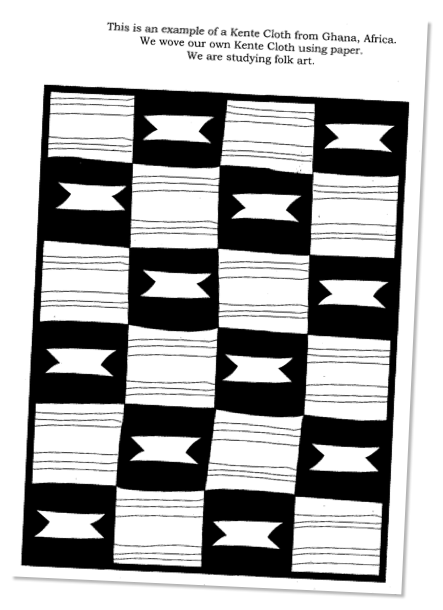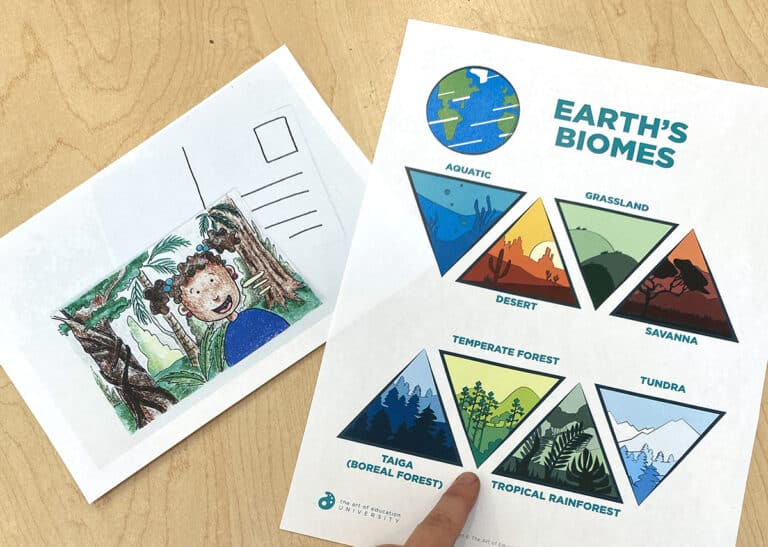Weaving is a great opportunity to talk about many cultures from around the world. In every lesson, I like to make connections to culture and art history whenever possible. Here is one example of how I take a simple weaving lesson and put a informative spin on it by teaching about Kente Cloths from Ghana.

I first show my own Kente cloth, which I purchased from Crizmac. When students walk in, I have it around my neck in the traditional style. We talk about weaving, fibers, patterning and the country of Ghana, where Kente Cloth traditions originated. We look at Ghana on the map. I find it very important to not just say ‘Africa’ and specify the country. Africa is a very large continent, with much diversity throughout. The more specific you can get with your students when discussing culture and geography, the more authentic the learning.

As for the project, students start with making a simple weaving using A, B, A, B patterning. The long and slender weaving size is perfect for little hands, and emulates the shape of a real Kente Cloth. To reinforce patterning (and provide multiple chances for students to demonstrate different types of patterning) the weaving is glued on to a piece of paper and another more complex pattern of the student’s choice is added around the border.

 To wrap up the lesson, and reinforce the idea of patterning and the concepts we learned about, a coloring page from the book “Kente Cloth: Patterns to Color” (pictured above) is passed out. A coloring page, you might ask? Yes, I do think they have their place. I ask students to please demonstrate a pattern using color. The little note helps parents realize that we aren’t just coloring- there was a reason behind the lesson- when they take it home.
To wrap up the lesson, and reinforce the idea of patterning and the concepts we learned about, a coloring page from the book “Kente Cloth: Patterns to Color” (pictured above) is passed out. A coloring page, you might ask? Yes, I do think they have their place. I ask students to please demonstrate a pattern using color. The little note helps parents realize that we aren’t just coloring- there was a reason behind the lesson- when they take it home.
Another great book to read as a part of this unit is Anansi the Spider, which is a folk tale from the Ashanti (a region in Ghana).
See how a simple weaving lesson can turn into so much more? It’s my favorite part of designing an art curriculum- to make the content as rich and deep as possible, without sacrificing the art concepts!
Tell us – In what ways are you infusing culture into your art lessons?
How about weaving? Tell us of one success story from your classroom.
Magazine articles and podcasts are opinions of professional education contributors and do not necessarily represent the position of the Art of Education University (AOEU) or its academic offerings. Contributors use terms in the way they are most often talked about in the scope of their educational experiences.




